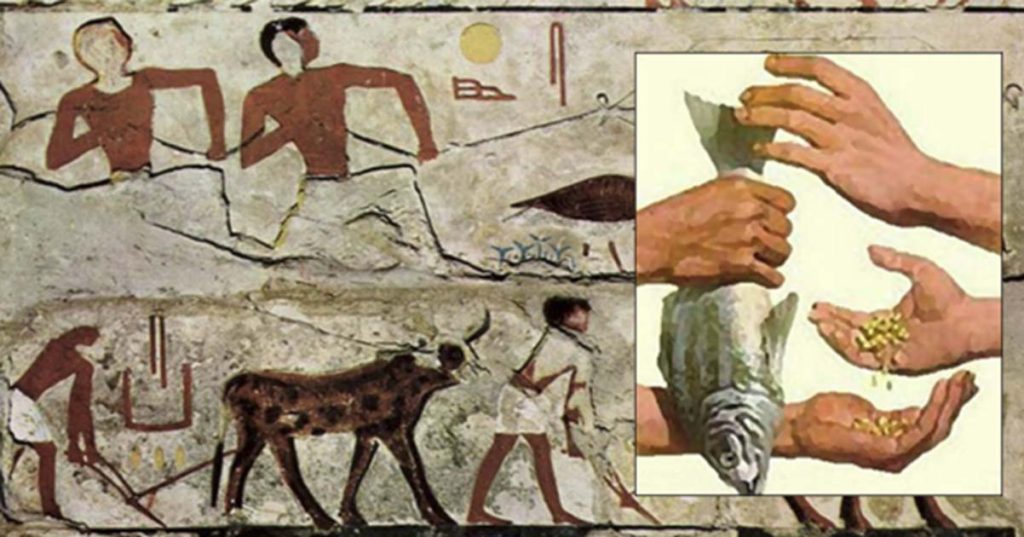Ancient Egypt was an extremely successful early civilization, that thrived off the Nile River in Northeast Africa for over 30 centuries. While there were a wide range of factors that contributed to this ancient society’s success, the factor that was vital was the geography of Ancient Egypt’s settlement.
This is because of the natural barriers protected them from endangerment through other civilizations, and the natural resources that the Ancient Egyptian’s place of settlement offered that therefore created a sustainable future for their society. However, the ability of Ancient Egypt’s leader to coordinate diplomatic relations with the civilizations they came into contact with through trade and war also contributed to their thriving civilization.

The land that Ancient Egypt settled on was rich with resources pivotal to their advanced sophistication as it allowed the creation of Kemet to provide for an ever-increasing population and supported structures vital to their religious beliefs and other necessary architecture.
The Ancient Egyptian’s ability to develop a sophisticated agricultural calendar around the seasons of the Nile’s annual inundation allowed them to grow a wide range of crops to an abundant level, enabling population growth.
This in turn, allowed for the establishment of a larger army and provided workers during Akhet to work on public buildings. Further to this, the sandstone and granite in the south of Egypt provided them with the material necessary to construct large-scale building projects such as temples and tombs which supported the growth of their central belief systems.
In addition to this, it also made the construction of statutes to celebrate and reinforce the role of the pharaoh possible, leading to greater central control over the population. Precious metals such as gold and lapis lazuli naturally formed on Egyptian soil, thus creating more beneficial trade relationships and allowed for the beautification of religious funerals, again contributed to the common goal. Therefore, the land the Egyptians settled on aided their longevity exceptionally, as it was equipped with assets essential for the construction of large-scale architecture and provided bountiful crops to support a growing society.

Ancient Egypt was surrounded by natural barriers that were focal to the permanence of their civilization because of the protection it offered from posing threats such as conflict or invasion from other societies located nearby. West of Upper Egypt, the Lybian Desert or Deshret extended inhospitable conditions, enveloping Egypt.
Egypt was a pocket of sanctuary inside a vast hostile and harsh landscape. Though Deshret only extended to the west of Egypt, Egypt had other defenses in their favor. The highlands of Upper Egypt provided protection from Nubians, another early civilization developed south of Egypt. The Mediterranean and Red Sea also offered security, though it also provided access to trade and contact other groups in the area. Thus, Egypt’s natural characteristics were key in Ancient Egypt’s successes as a long-lasting society.

Although there were many resources available to the Ancient Egyptians through their own land, the Red Sea, Nile and the Mediterranean Sea enabled Egyptians to make contact with other groups such as Nubians, Palestinians and Syrians and create mostly peaceful trade relationships that benefited the Egyptians greatly.
The Egyptians, who with the help of the Nile and the annual inundation, were heavy with extra crops such as wheat, barley and flax, could trade their surplus food for things Egypt did not offer. They also traded papyrus and rope. In return, they received goods important to religious beliefs such as the mummification process.
Goods like honey and cedar oil were traded for surplus crops for use in embalming, semi-precious stones such as copper, silver and ivory were traded too, and trees to provide incense during religious ceremonies. Therefore, although Egypt was already rich in resources vital to sustaining life, the contact between other civilizations strengthen Egypt’s potential to succeed.
So many elements contributed to this early society’s success, though the components most crucial would be the geography of the land that Ancient Egyptians settled on due to the natural defenses and resources available to them and the pharaoh’s ability to create diplomatic trade relations.
